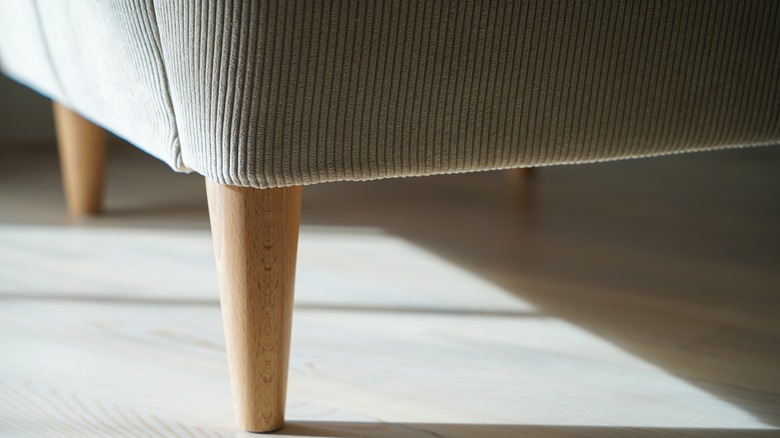The Most Important Place To Use Sponges That You're Probably Missing
The kitchen sponge is known for its ability to soak up liquids and soap up dishes. Before the sponge was invented, people used cloth to wash their dishes and clean their surfaces, but cloth wasn't able to absorb moisture very well, so the sponge was born, History Stack Exchange explains. Besides cleaning up messes around the house, did you know there are several other ways to use your household sponge? Yep, sponges aren't just for the kitchen anymore — they've evolved into an all-purpose tool.
The best thing about the sponge is its seemingly limitless functionality. It solves a lot of problems many homeowners have, and today, we're going to explore just a few (you'll be surprised to learn that neither of these uses takes place in the kitchen). So, if not there, then where? Here are two of the most important places to use a sponge that you're probably missing out on.
Under your furniture legs
If you have wood flooring in your home, you're probably familiar with every homeowner's worst nightmare: scratching it. Thankfully, many companies offer furniture leg protectors, such as small velvet adhesives or end caps that you add to the bottom of each leg. According to Grainger, these adhesives and non-skid rubber caps are designed to prevent scratches and other damage from happening to your floor.
You can actually use a kitchen sponge to make your own furniture leg covers at home. All you need to do is cut the sponge into small pieces and glue them onto the bottom of each table, chair, and sofa leg. The Washington Post states that while velvet adhesives are the best covers to protect your floor, many homeowners find they don't stay sticky as long as they'd hoped. By using sponges, you're protecting your floor a lot longer for a lot cheaper.
Removing wallpaper
When it comes time to remove that old, ugly wallpaper from your living room, you might be surprised to learn you don't need a ton of product or expensive equipment — just your typical household sponge. Using a sponge to remove wallpaper is incredibly easy and affordable. So, how does it work? DIY & Crafts explains that all you need to remove old wallpaper is hot water and your trusty sponge. Start by soaking the sponge in hot water, then dab the wall with the sponge, and watch as the wallpaper glue melts away!
Once you've loosened the glue, use a scraper to remove the rest of the wallpaper. The key to this wallpaper-removal method is to work in small sections that you can remove in 15 minutes or less, SheKnows states. If you're wetting large sections of the wallpaper that dry before you can scrape them, you're going to have a more difficult time trying to remove it.


